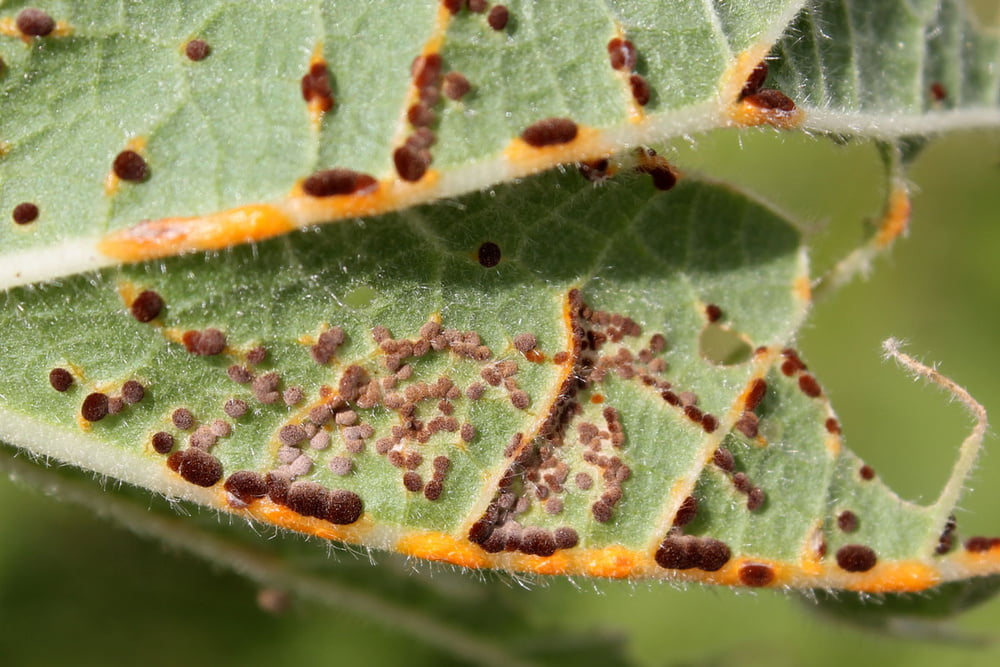Mallow plants such as rose mallow, hibiscus, hollyhocks and co. bring a touch of Hawaii to the garden. Unfortunately, the exotics are sensitive to diseases. We show which home remedies help against mallow rust.
If tulips and daffodils are too ordinary for you in your home garden, perhaps you have already ventured into something more exotic, namely the mallow. This flowering plant is available both indoors (indoor hibiscus) and outdoors (mostly rose marshmallow) in a variety of forms and colors.
Unfortunately, like any other plant, the mallow is not immune to pests and diseases. In addition to infestation with aphids, mallows are also prone to so-called mallow rust.
Mallow rust is a fungal infestation, or more precisely, an infestation with rust fungus. The mallow gets rusty brown to yellow spots on the leaves. Rust-colored pustules even form on the underside of the leaves.
If you have discovered such a change on your plant, quick action is required.
Contents
Fight mallow rust with milk
Mix skim milk, buttermilk or whey with water in a ratio of 1:8. UHT milk is not suitable.
Remove clearly visible infested leaves from your plant.
Fill the milk-water mixture into a spray bottle and wet the diseased plant generously with it. Do not forget the underside of the leaves as well.
Repeat this treatment every ten days in humid weather, and every three to four weeks in dry weather.
Fight mallow rust with baking soda
Mix half a teaspoon of baking soda with a liter of water and optionally a teaspoon of cooking oil.
Pour the prepared lye into a spray bottle and generously wet the top and bottom of the leaves and stems of the mallow.
Fight mallow rust with garlic
Dice about 70 grams of garlic.
Pour a liter of boiling water over the garlic cubes.
Let it sit for at least five hours.
Strain or strain the garlic cubes and pour the liquid into a spray bottle.
As with the other treatment options, now spray the mallow generously with it from all sides.
Fighting mallow rust with slurry from ferns
Put 100 grams of worm fern or bracken in a bucket with one liter of water (preferably rainwater) and let it sit for two to three days. If you have several plants to treat, increase the amount of fern and water accordingly.
Remove infested leaves from the plant.
Now fill the slurry into a spray bottle and spray your mallow plants generously with it. Do not forget the undersides of the leaves.
Check your mallow plants regularly. If you do not notice a decrease in the mallow rust infestation, repeat the manure treatment after about two weeks.
Tip: Make this treatment on a day that is not too sunny, but dry.
Fighting mallow rust with yarrow
Crush 200 grams of fresh or 20 grams of dried flowers of yarrow.
Soak everything in a liter of water for at least 24 hours.
After soaking, the broth must be put on low heat on the stove and simmer for 30 minutes.
Drain the plant parts and let everything cool down.
Now fill the liquid mixed with water in a ratio of 1:9 into a spray bottle and wet your mallow generously with it.
Tip: Depending on the severity of the infestation with mallow rust, spray the plants daily over a period of three to four days.
However, to prevent mallow rust from occurring in the first place, check for early signs when you purchase your young plant. Other causes that can lead to an infestation of mallow rust are:
- insufficient drying of the leaves after rain or watering, therefore water only near the ground and not over the leaves
- too high humidity. Mauves are not greenhouse plants
- too sheltered location with too much rainfall
- too little distance between plants
There are a variety of home remedies to help with mallow rust. Which one suits you and your plant is up to you. You should only resort to the chemical club from the trade in exceptional cases.










